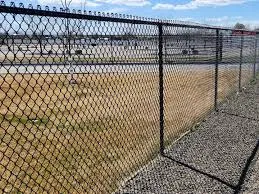The Significance of Grassland Fences
Grasslands, with their sweeping vistas and rich biodiversity, are crucial ecosystems that support a wide array of plant and animal species. However, as human activity increases and the pressures of livestock grazing mount, the need for effective land management practices becomes paramount. One such practice is the establishment of grassland fences, which serve multiple functions that contribute to the health and sustainability of these vital ecosystems.
Defining Grassland Fences
A grassland fence is typically a barrier constructed using various materials, such as wood, wire, or natural elements, designed to manage livestock movement and protect grassland resources. Fencing can vary in design and construction based on the specific goals of land management—whether for rotational grazing, conservation, or habitat restoration. Effective fencing is crucial to controlling animal access, thereby shaping grazing patterns and enabling grasslands to thrive.
Benefits of Grassland Fences
1. Controlled Grazing
One of the primary benefits of grassland fencing is the ability to implement controlled grazing practices. By dividing larger pastures into smaller, manageable sections, ranchers can practice rotational grazing. This method allows grasslands to recover and regenerate between grazing periods, promoting healthier plant growth and preventing overgrazing. In turn, controlled grazing enhances soil fertility, improves water retention, and maintains biodiversity.
2. Protection of Native Species
Fences play an essential role in protecting sensitive flora and fauna within grassland ecosystems. By creating designated areas free from livestock, land managers can ensure that native species have a chance to thrive. These protected zones can serve as critical habitats for birds, insects, and other wildlife, contributing to overall ecological balance. Furthermore, establishing protective barriers helps to mitigate the risk of invasive species encroaching on native habitats, thereby preserving the integrity of the grassland ecosystem.
grassland fence

3. Soil Preservation
Grassland fences also contribute to soil preservation. By managing grazing patterns, these fences help prevent soil compaction, which can occur when livestock congregate in certain areas for long periods. Soil compaction can lead to reduced water infiltration, increased runoff, and a decline in soil health. Maintaining healthy soil is vital for the sustainability of grasslands, as it supports plant growth and contributes to the overall resilience of the ecosystem.
4. Enhancing Aesthetic and Recreational Value
Beyond their ecological benefits, grassland fences can enhance the aesthetic and recreational value of landscapes. Well-constructed and maintained fences can provide a visually appealing structure that complements the natural beauty of grasslands. Furthermore, fenced areas can be designated for recreational activities such as hiking, birdwatching, or photography, allowing people to engage with these environments while respecting their ecological significance.
Challenges and Considerations
Despite their numerous benefits, the implementation of grassland fences is not without challenges. One significant concern is the initial investment and ongoing maintenance required to ensure that fences are effective and durable. Additionally, improper fencing can lead to unintended consequences, such as restricting wildlife movement or creating barriers that impede natural migration patterns.
To mitigate these challenges, it is essential for land managers to adopt a holistic approach to grassland fencing. This includes assessing the specific needs of the ecosystem, engaging with local communities, and integrating traditional knowledge of the land. Collaborative efforts can lead to the development of fencing strategies that align with both ecological sustainability and community interests.
Conclusion
Grassland fences represent a critical tool in the management and preservation of these invaluable ecosystems. By facilitating controlled grazing, protecting native species, and preserving soil health, fences contribute significantly to the sustainability of grasslands. While challenges in their implementation exist, the benefits of thoughtful and strategic fencing practices far outweigh the drawbacks. As we continue to balance human needs with ecological conservation, grassland fences will undoubtedly play a pivotal role in shaping the future of our grassland landscapes.
















